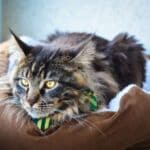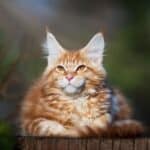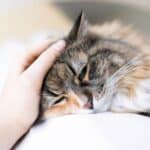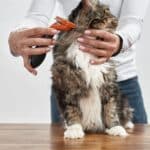An average cat has 5 toes on each front paw and 4 on each back foot. Polydactyls usually have one or two extra toes on each paw. Their configuration is also different. The Pd (polydactyly) gene is an autosomal incomplete dominant gene.
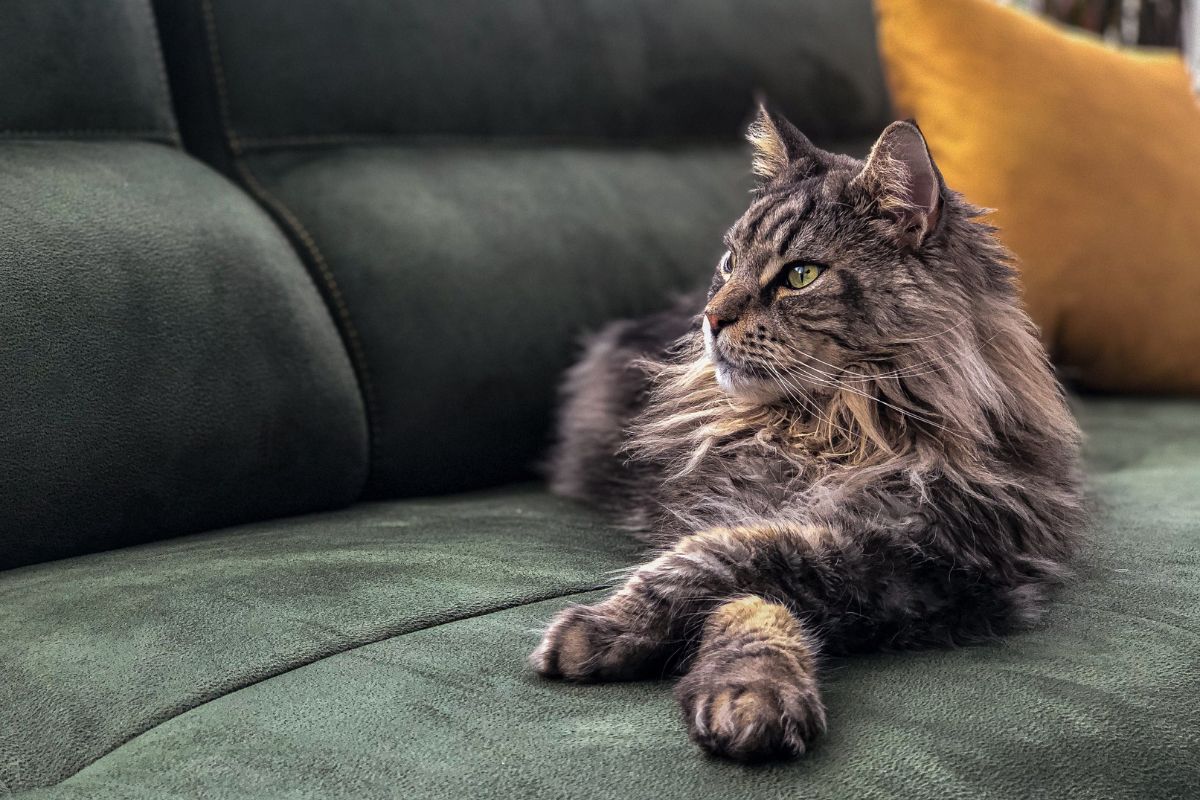
Polydactyly is a relatively common anomaly among cats with no harm to their physical abilities. It is expressed in 40-50% of cases and is not related to sex. The gene has complete or nearly full penetrance, which means that if the cat does not express the trait, it is free of the Pd gene. At the same time, it has been noted that a polydactyl kitten can be born only if one of the parents was also a polydactyl.
The only problem usually cited by owners of polydactyls is the need for more frequent claw trimming on the extra toes. In addition, the descendants of polydactyls have a more severe and broad (especially in the chest and forelegs) bone structure compared to kittens obtained from normal parents.
Polydactyly is a natural mutation that also occurs in other species. There are many scientific studies, current, and past, that prove it is a harmless trait. Polydactyly in the Maine Coon is a dominant trait, so the decision to breed with poly or avoid poly is easy to make because at least one parent must be poly for poly kittens.
Kittens from a combination of Maine Coon and Maine Coon Polydactyl will produce variable proportions of kittens, but statistically, it will be up to 50% poly and 50% non-poly. Traditionally, a P or PP is placed in the pedigree name to show that the cat is polydactyl.
In the early 20th century, the breed disappeared from dog shows. The Persian cat and other exotic cats came to America and were more interesting. Consequently, hard times for the breed. In 1959, the breed was declared extinct. This caused breeders to push for the restoration of the breed.
They noticed that this variety of Maine coon cats is characterized by more massive bones, often more height, better health, and different behaviour than other standard Maine coon cats. The story goes that these cats fed their human families with fish that they caught and brought home.
However, these cats are actually more clever. Their behaviour shows logical reasoning, and their disposition is cheerful. The Polydactyl Maine Coon is a curious and loving cat, although they are not well known to all cat lovers. It is a purebred Maine Coon cat that has extra toes. An average cat has five toes on its front paws and four toes on its back paws, but a polydactyl cat can have up to seven toes on each paw (a maximum of eight, which is a rare exception).
Maine Coon Polydactyl cats play an essential role in the heritage of the Maine Coon breed and add diverse pedigrees to the gene pool. They are used in all mating types, whether they are a foundation, crossbred, or show line.
Having extra toes in these cats is not a defect, but a natural adaptation to these cats' harsh environment before they were bred. The adaptation to the environment in the form of an extra toe is also present in all varieties of lynxes, making it easier for them to hunt.
By nature, Maine Coons have stamina and strength and are excellent hunters. They help them not to fall on snow surfaces and climb trees. Therefore, it has been suggested that the extra toes are "given" by mother nature to provide better stability and endurance.
More polydactyls are thought to be satellites of sailors and ships of cats. The extra fingers helped them keep their balance on board, even during storms. Since they mainly have a hunting instinct, catching mice and rats on the ship was their first task. Besides, sailors believed that policemen were lucky, so they were happy to take them on long voyages. This helped spread the British Maine Coon to the Americas.
Jump to:
Claws and paws
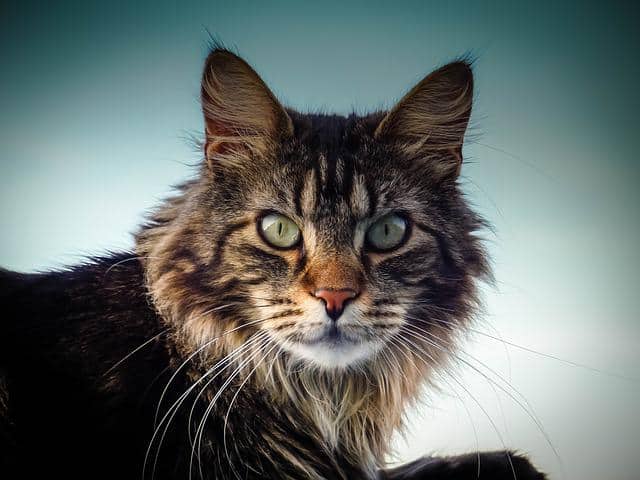
A cat's paws are probably one of the cutest parts of a Cat. Their tiny fingers and round shape make people want to grab them. However, most cats retreat quickly or put up a fight. This is because a cat's paw is more sensitive than the rest of its body.
Although the blocks are hard, they are full of nerve endings that help the cat feel the world around them. So they can walk on rough surfaces, but they can still tell if a surface is too hot or too cold. They also have sweat glands that help them regulate their body temperature and scent glands that allow them to mark their territory. So if you ever see your cat scratching, they're probably marking their scent.
Their claws are curved and extendable to help them grasp and climb trees. Claws are essential for scratching, catching prey, play and self-defence.
For the Maine Coon, their paws and claws were vital. Being a well-known mouser, people wanted to get Maine Coons to keep rats, mice, and other small animals out of boats and homes. Their large paws and claws were essential to this claim to fame.
Why does the Maine Coon have extra toes and big paws?
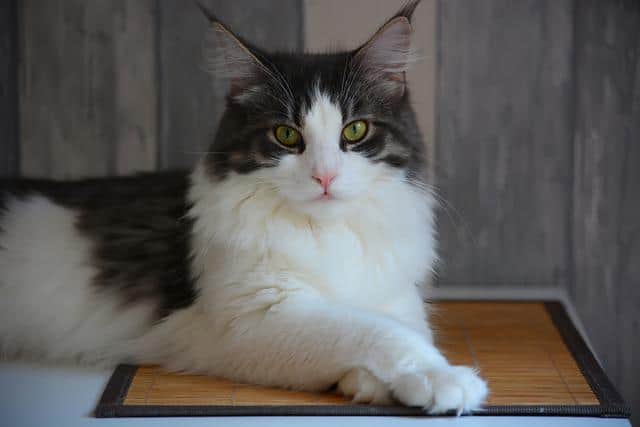
Maine Coons were originally hardy seafaring cats from Maine. The coastal environment was rich with sailors and sailors' families. So Maine Coons were prized because of their usefulness on ships. They are working cats and could catch food, climb well and catch mice that would eat the food onboard.
Snow also affected how Maine Coons developed their paws. Large amounts of snow were difficult to walk in, but Maine Coons adapted wide paws to function as snow boots. Tufts of fur on the paw padding kept the paw insulated, so the cold was kept out. This made it easier to move over the snow-covered ground without sinking.
What Does Polydactyl Mean?
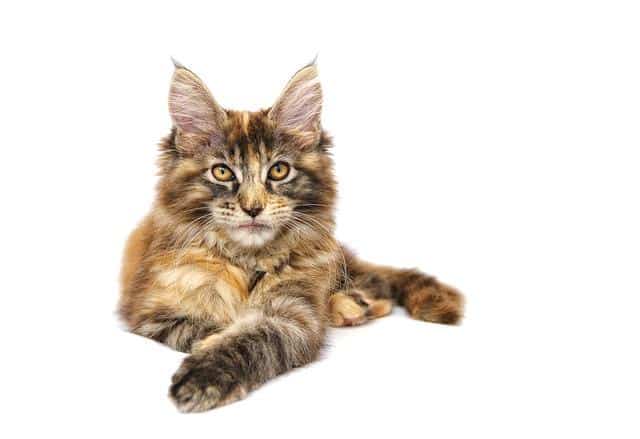
Another reason Maine Coon paws are so large is that they are known as polydactyls.
When a cat has an extra toe or glove paws, they are polydactyls. Typically, cats have five toes on each front paw and four on each back paw, for 18. However, a polydactyl cat will have extra toes, usually on the front paws. It is rare to find them on the hind paws and even rarer if the cat has all four paws with an extra toe.
Often, only one toe is extra, but sometimes there may be more. A polydactyl cat usually has only one extra toe on the side of the paw where the declaw is, or the claw does not touch the ground. With that in mind, there is only so much room for extra toes, so it is unlikely there will be more than two.
Maine Coons were early pioneers of this genetic mutation, making their paws larger than usual. This was a common trait. Sailors thought these cats brought good luck. They were lucky, but they were also able to catch mice that got on board ships.
One sailor gave the famous writer Ernest Hemmingway a polydactyl cat, later named Snow White. Already an avid cat lover, Hemmingway fell in love with the extra-toed kitty.
Several people still find these types of cats cute and unique. This trait is becoming less common and is not accepted by most cat shows. Maine Coon breed standard states clearly there should not be only 18 toes.
What if my Maine Coon is Polydactylic?
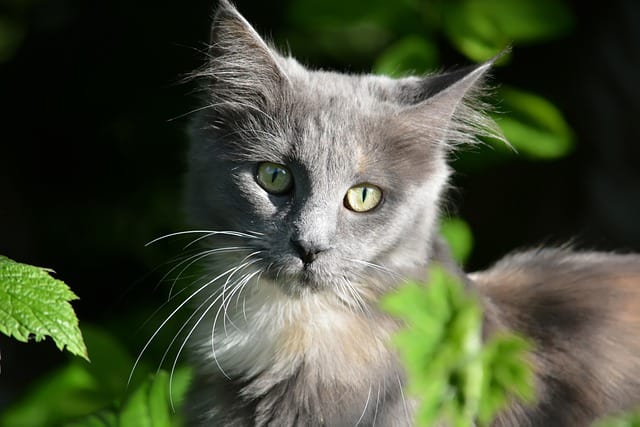
The genetic mutation is generally harmless. Just because a cat is polydactyl does not mean that it is unhealthy. An extra finger or two will not affect your Maine Coon's quality of life. It may be a little easier to get tangled in blankets.
When trimming your Maine Coon's nails, don't forget the odd one! Extra claws require extra surfaces to scratch. Provide your kitty with enough scratching posts and other surfaces to ensure they can take care of themselves.
Hidden dangers of Polydactylism
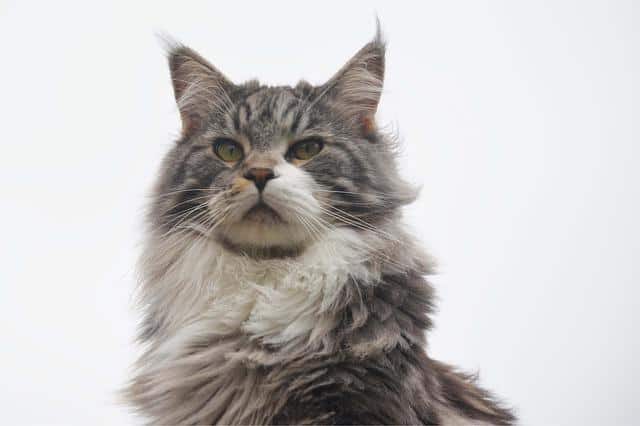
There is sometimes a risk of extra fingers. The gene responsible for producing extra fingers can affect other areas of the cat's body. For example, that genetic mutation can also cause underdevelopment or complete absence of the main bone in the arm.
There may be a complete absence of a nail, or the nail may grow strangely, too curved, or other various twists and turns. If left unattended, they can puncture the cat or cause discomfort when walking. Keep an eye on your Maine Coon to ensure they are not experiencing pain or discomfort.
Maine Coons have held countless records as the largest breed of cat. Their square bone structure gives them a sturdy and robust appearance. Their large-boned body also contains their paws. Although their paws are naturally Large, they were also developed to endure the harsh Maine winters. Their large paws, padding, and insulation help them walk along with the snow, like snow boats.
Polydactylism is also common among Maine Coons. A genetic mutation gives Maine Coons an extra toe, so their paws look more extensive than before. Generally, this is harmless, but make sure you take extra care when trimming your cat's different toenails and give them plenty of places to scratch.

